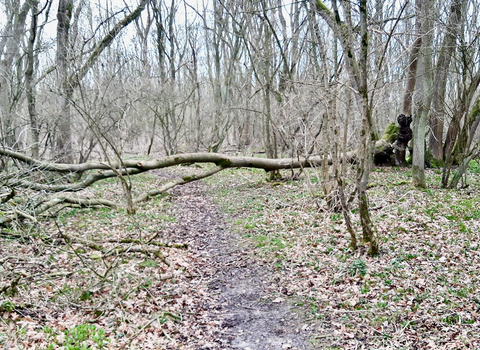The recent storms across the region have taken their toll on many trees at Trust nature reserves across Beds, Cambs and Northants. After Dudley then Eunice, along came Franklin to complete a three line whip, and compound further damage with lashing, ferocious winds.
At some reserves path closures have been necessary, as we deal with issues but, so far, no reserve closures. We are still assessing sites across the region to understand the full damage but one of the worst affected reserves so far is Lower Wood, Cambridgeshire which has lost an estimated 10% of its trees, and Gamlingay Wood where a large fallen tree is blocking a path.
Many of those which have fallen are ash trees which show clear signs of ash dieback disease. There are other signs of tree disease in the trunks, and these infections weaken the tree and have undoubtedly been a major factor in the damage. Volunteer warden of Lower Wood, Duncan McKay said: “I think as many as 10% of the trees in the wood have come down it might be more; a lot of the damage is in the northern sector of the wood. The coppice plots are alright and most of what has come down is ash, not surprisingly. But there are signs of problems in other species, fungal or bacterial attack seems to be a major factor, fungal activity can be seen in the root plates. It does look rather sad.”
Wistow Wood in north Cambs has had several trees blown down (mostly diseased ash), and a number now are part fallen and some lodged in other trees, while at Felmersham, Beds a large willow has split. While some fallen trees create ideal habitat for small invertebrates, insect life and fungi and opening spaces can be of benefit, our teams are assessing damage for potentially dangerous trees which may fall in weeks to come.
Please take care when visiting any Wildlife Trust nature reserves in the coming days and bear with us as our reserve teams work hard to clear up; do check before visiting for closures or path closures.






